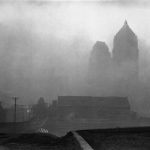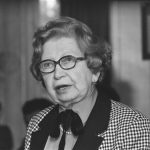During World War II, the Allied forces faced the challenge of transmitting secret messages that enemy troops couldn’t decode.
In response, the U.S. Marine Corps enlisted a special group in 1942 known as the Navajo Code Talkers. Their mission was to create an unbreakable code using their native language.
The Navajo language, rich and complex with no formal alphabet until the mid-20th century, was almost impossible for outsiders to understand. This made it ideal for securing military communications.
Over the final three years of the conflict, hundreds of Navajo speakers operated in the Pacific Theater. They encoded, transmitted, and decoded messages related to Japanese troop movements, artillery locations, and battle strategies.
Their contributions were crucial to the Allied victory but remained largely unrecognized for decades.
How the Navajo code created
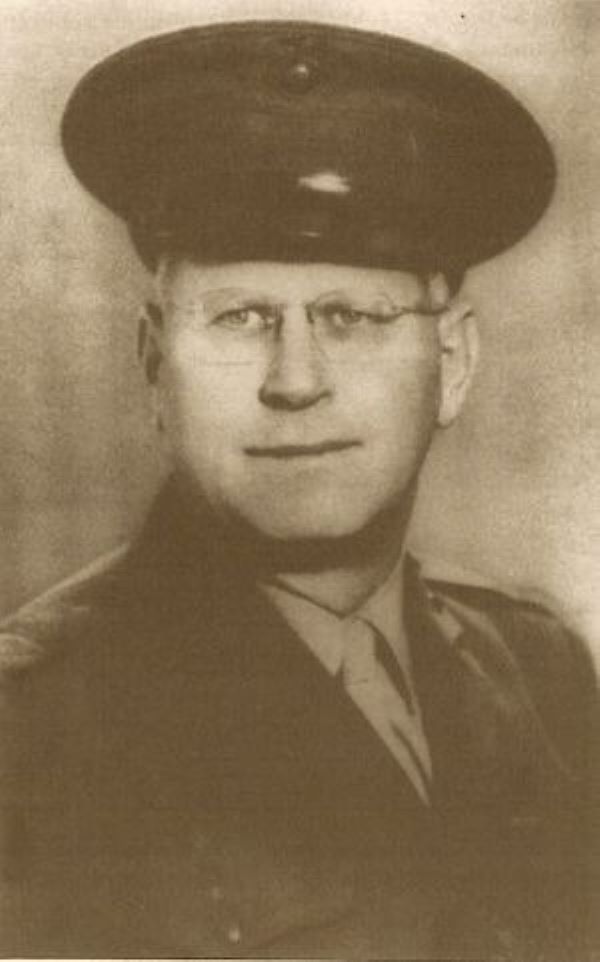
In 1942, Philip Johnston, who grew up in the Navajo Nation and served in World War I, had a revolutionary idea for secure military communication.
He proposed using the Navajo language for a secret military code. Johnston had read about Native American soldiers using their native languages during training exercises and saw the potential for this in breaking military codes.
Johnston was aware of the difficulties the U.S. military faced in creating a secure code for communication in the Pacific Theater.
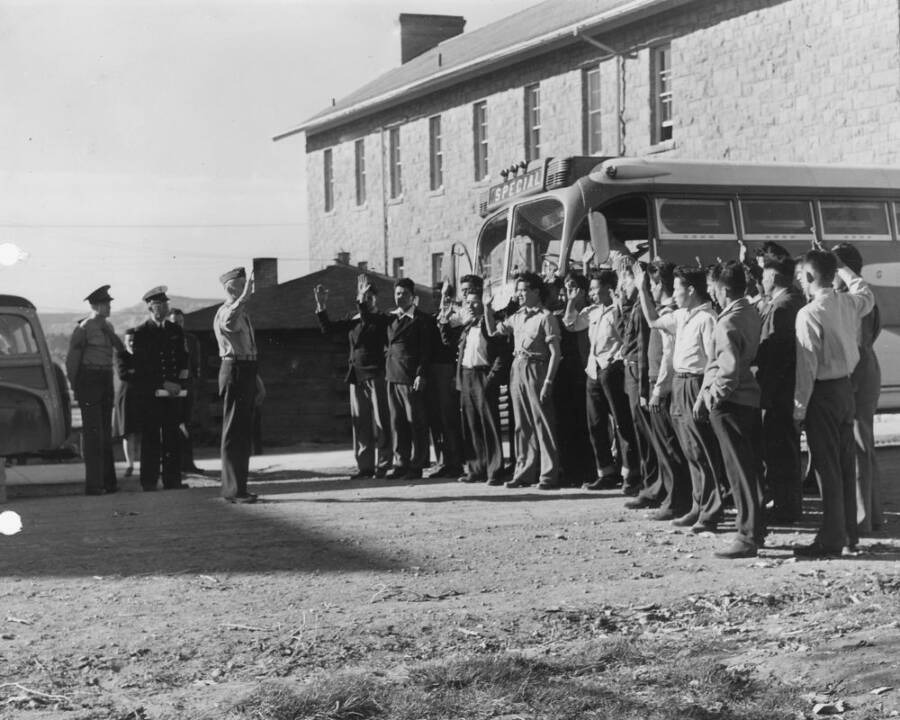
Navajo Code Talker Peter MacDonald noted the problem: “In the early part of World War II, the enemy was breaking every military code that was being used in the Pacific.” Johnston’s idea seemed like a perfect solution.
He argued that the Navajo language, being complex and unwritten, was ideal for creating an unbreakable code. Plus, many young Navajo men were bilingual due to the government’s assimilation programs.
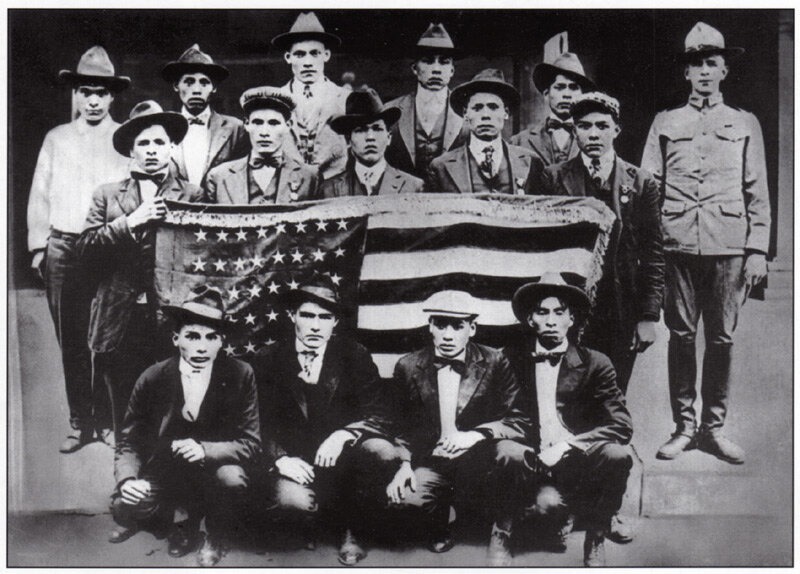
The Marine Corps was intrigued by Johnston’s idea and started a pilot Code Talker program with 29 Navajo recruits.
These men, after basic training, collaborated with Marine communication teams to develop a detailed code of over 211 words. This code would eventually expand to 411 words.
As Corporal William McCabe explained, they named military equipment and units with Navajo terms, like using “buzzard” for bomber and “hawk” for dive bomber.
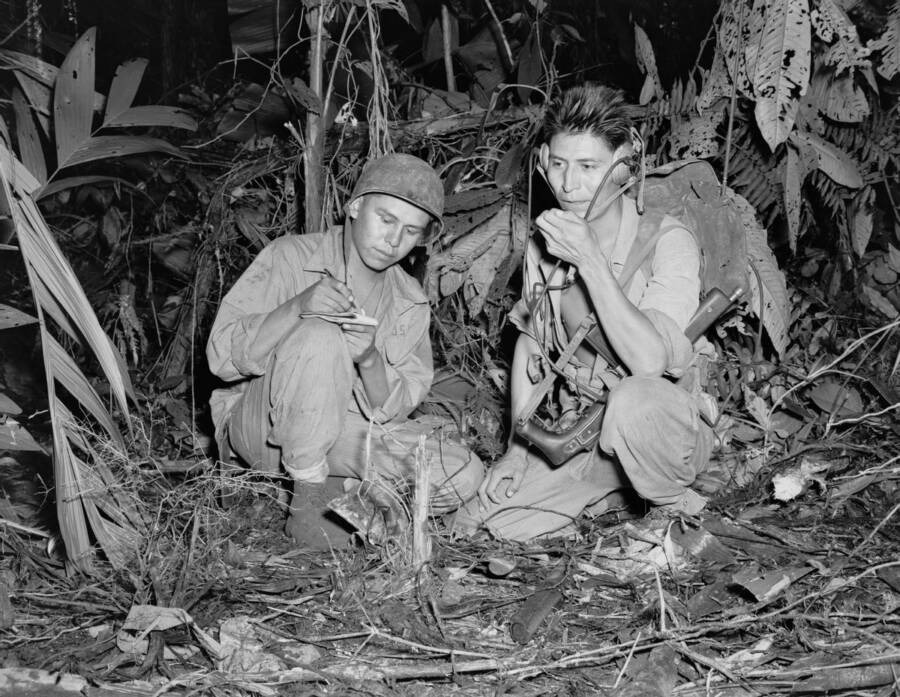
Additionally, the Code Talkers developed an alphabet where Navajo words represented English letters.
For instance, the Navajo word for ant, “wo-la-chee,” stood for the letter “A.” This innovative code proved highly effective, and the Marines were ready to put it into action.
The speed and accuracy with which the Navajo Marines transmitted and decoded messages amazed Marine officials. “No other form of military code, at the time, was as fast or accurate,” noted a Marine official during the testing phase.
Navajo code talkers in action
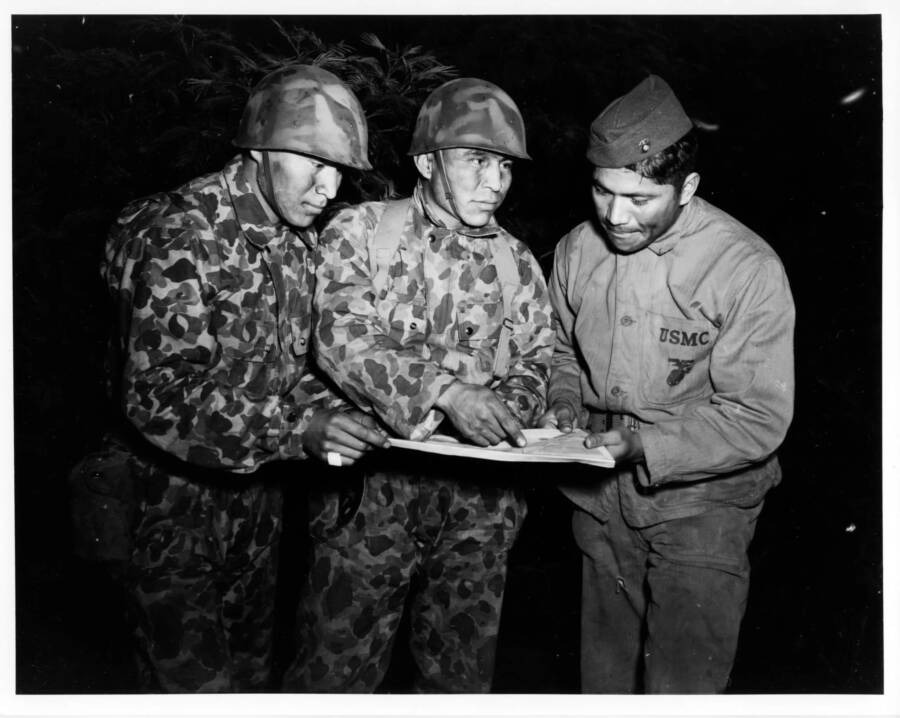
Unlike traditional military codes, which were complex and required lengthy decoding processes, the Navajo code was remarkably straightforward.
It didn’t need to be written down or transmitted through equipment; it was spoken directly from one person to another.
This made it incredibly fast and efficient. During early tests, the Code Talkers could translate, send, and decode a message in under three minutes.
The Navajo code also had a unique advantage: the vocabulary words and their English translations were chosen randomly.
Even if someone learned Navajo, they would only see a list of seemingly random words, making the code nearly impossible to break.
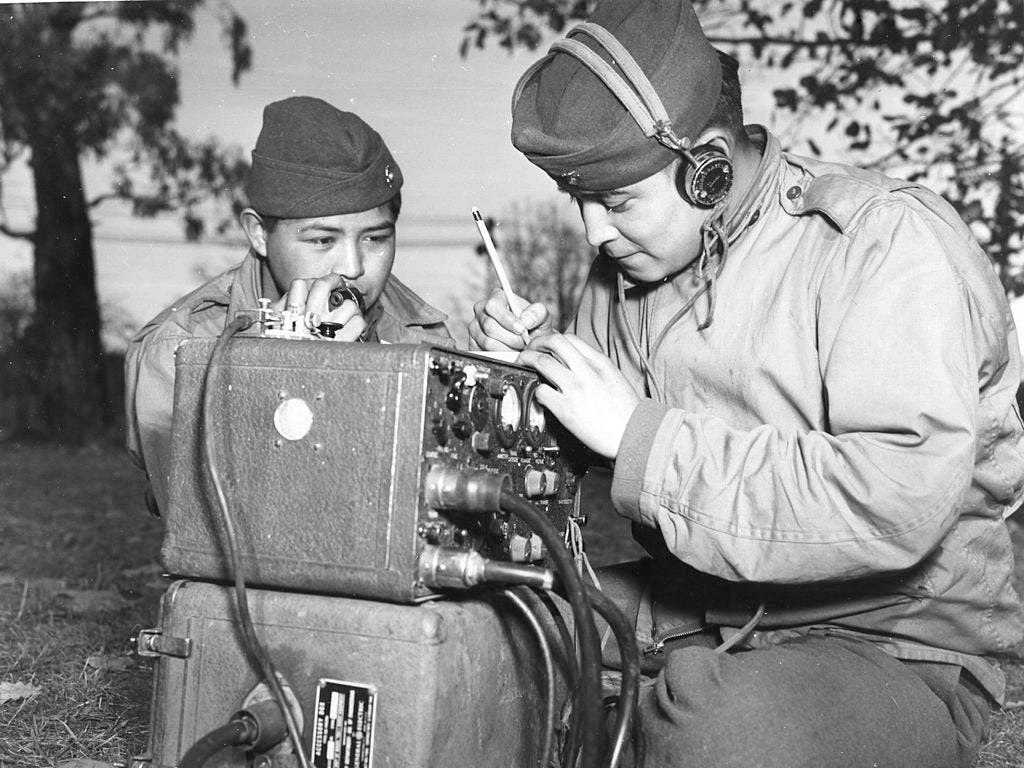
The Marine Corps was quickly impressed by the Navajo code’s effectiveness. What began with just 29 Code Talkers grew to over 450 by 1945.
The code’s success was particularly notable during the Battle of Iwo Jima. For two days, six Navajo Code Talkers tirelessly sent and received over 800 messages without a single error.

Major Howard Connor, the signal officer in charge, praised the Code Talkers’ contributions.
According to the CIA, Connor stated, “Were it not for the Navajos, the Marines would never have taken Iwo Jima.” This high praise underscored the critical role the Code Talkers played in securing victory.
The Navajo Code Talkers continued to use their code until the end of World War II. Their cipher remained unbroken, showcasing its effectiveness and the skill of its creators.
The lasting legacy of the Navajo code talkers

After World War II, the Navajo Code Talkers were forbidden from discussing their wartime role. The military wanted to keep their language secret in case it was needed again.
This meant the Marines couldn’t even share their achievements with family members.
It wasn’t until 1968, over two decades later, that the operation was declassified, allowing the Code Talkers to speak about their contributions.
Yet, true recognition would take even longer. In 1982, President Ronald Reagan designated August 14 as “Navajo Code Talkers Day.”
Then, in 2000, President Bill Clinton awarded the Congressional Gold Medal to the original 29 Code Talkers. By the time President George W. Bush presented the medals in 2001, only four of the original Code Talkers were still alive.
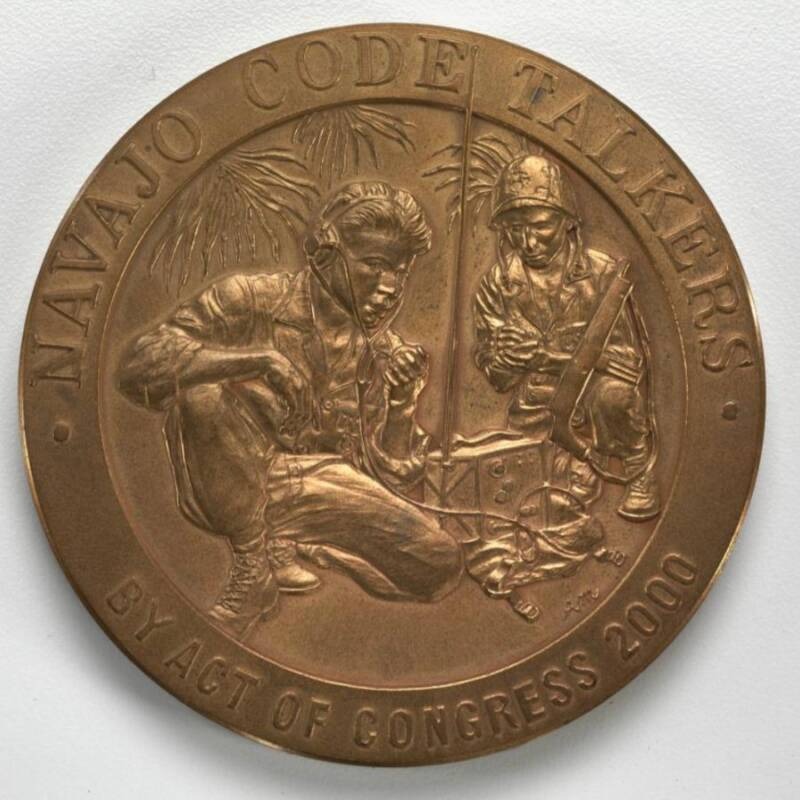
The story of the Navajo Code Talkers has gained recognition in modern culture, though it remains lesser-known.
The 2002 film Windtalkers, starring Nicolas Cage and Christian Slater, brought their story to a broader audience. Numerous books have been published, including a firsthand account by one of the Code Talkers.
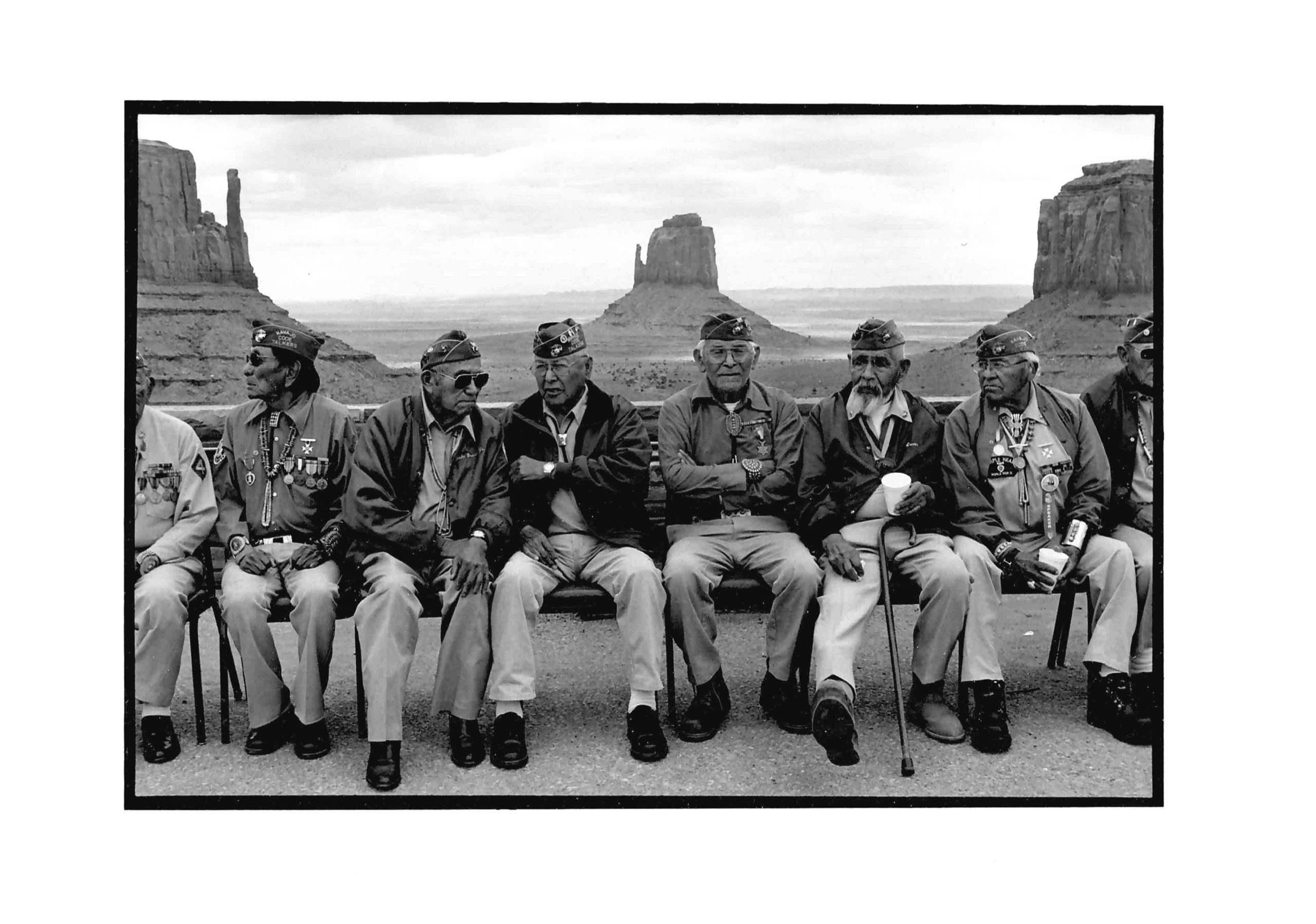
Their legacy extends beyond film and books. There is a Navajo Code Talker G.I. Joe action figure and even a special Code Talker beer brewed by John V. Goodluck’s grandson.
This beer is a tribute to the Code Talkers’ legacy and their contributions to the Allied victory.
Today, the number of surviving Code Talkers is fewer than twelve, and their exact number remains uncertain as no formal tally was kept. Nevertheless, their bravery and skill continue to be remembered and celebrated.

